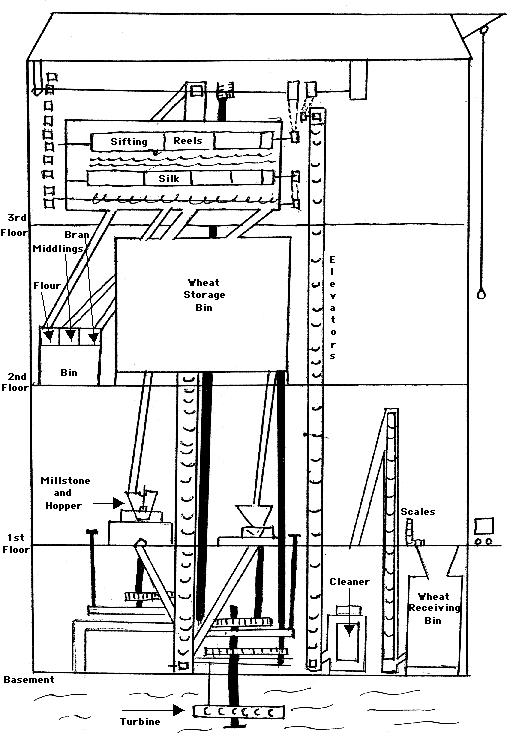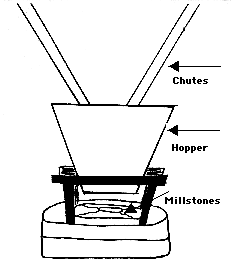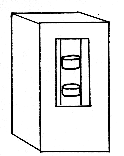|
REFERENCE / ACTIVITY SHEET STOVER GRIST MILL: 1832 - 1932 |
||
|
(Excerpted from an original work by Melody McIntyre Nichols) Operation of the Mill [Stover] mill was called a turbine mill and it was one of the earliest in the United States. The turbines were located under the first floor and were accessible through a trap door on the inside as well as by water which flowed under the arches and rushed through the fins on the turbine. The water flowed horizontally, turning a vertical axle that turned the master gears made of iron with wooden cogs. These cogs were made of maple wood and could be easily replaced when worn out. The gears and shafts on the other floors transferred the power throughout the Mill. Some of these gears were run by belts or link belt chains. |
||
|
||
|
The grain flowed through the hole in the center of the runner and was then crushed between the millstones. The amount of crushing was determined by raising or lowering or lowering the runner, or "running stone." Grooves were often cut in the stones to aid in cutting the grain. If the edges of the groves became dull, the stones were "dressed" or sharpened again. If the stones were grooved properly, the chopped grain worked its way to the outside of the stone, into the hopper and through to the rest of the mill. The stones were found in a wooden framework and his "hopper" held the grain that was being milled. |
||
|
||
|
When wheat was made into flour, the process was a bit different. The wheat would be elevated from the wheat receiving bin in the basement to the main floor. Next it was taken back down a spout to the wheat cleaner. There by the use of screens and a fan, stones, straw and other foreign objects were removed. The wheat was then elevated to the bins on the second floor above the millstones. When ready to be ground the wheat flowed down a slide to the millstones. When it was crushed, the wheat was elevated to the sifting machine on the third floor. There it passed through silk of different gauges to make middlings (low- grade flour), flour and bran. The sifted flour went down the spout to the second floor where it was packed in paper, cotton sacks or barrels for shipping. |
||
 |
||
|

